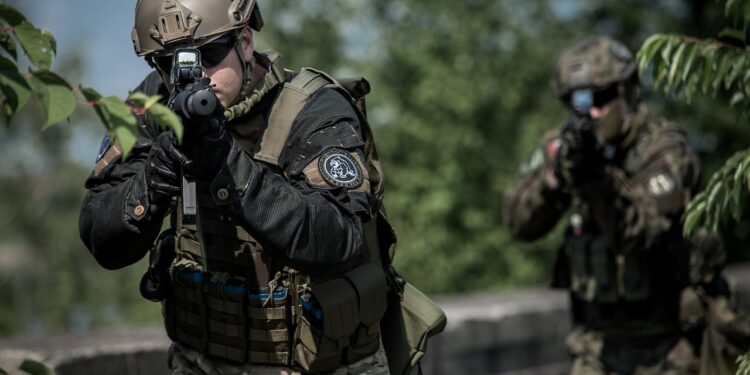As the war between Ukraine and Russia stretches into its third year, Kyiv is grappling with a critical challenge: a severe depletion of manpower. Years of relentless combat have taken a toll on Ukraine’s military, with mounting casualties and a dwindling pool of recruits. Adding to the crisis, Ukraine’s stockpile of arms is running dangerously low, leaving the country in a more precarious position than ever before.
Despite these hardships, Ukraine’s armed forces have displayed remarkable resilience and determination, defending their territory against Russian aggression. However, as Russia continues to make gains in the east, the strain is evident. The Ukrainian military is struggling to man the front lines adequately. Efforts to replenish ranks through mobilization and Western-style recruitment programs have faced significant obstacles, including allegations of corruption, inadequate training, and mismanagement, which have dampened public enthusiasm for military service.

Rising Desertions and Exhaustion Among Troops
The mental and physical toll of nearly three years of war is driving an increase in desertions among Ukrainian troops. Exhausted from the relentless fighting, soldiers are finding it harder to continue, further compounding Ukraine’s manpower issues. For a nation fighting to maintain its sovereignty and territorial integrity, this growing challenge poses grave risks. Can Ukraine withstand these pressures, or will its defenses falter?
Zelenskiy’s Plea for European Support
President Volodymyr Zelenskiy has turned to Ukraine’s European allies, urging them to take a more active role in supporting the fight against Russia. He has even called for the deployment of European troops to bolster Ukraine’s defenses. However, many European nations remain hesitant, opting to provide passive support through arms and financial aid rather than engaging directly in the conflict.
Plans for Military Transformation
In response to these challenges, Ukraine’s new commander of ground forces has unveiled plans for a “massive transformation” aimed at addressing troop training, management, and recruitment issues. These changes will include overhauling training programs, modernizing battlefield and logistics management, combating corruption, and leveraging technology. Additionally, President Zelenskiy has called for reforms at training centers, emphasizing hands-on instruction from battlefield commanders. To lead this effort, a prominent brigade commander has been appointed as a senior battlefield adviser.
The Stakes Are Higher Than Ever
Despite these efforts, questions remain: Will these reforms come quickly enough to fortify Ukraine’s defenses, particularly in the east? The timing is critical, as the world watches for signs of a potential ceasefire once U.S. President-elect Donald Trump takes office in January. Both Kyiv and Moscow are intensifying their efforts on the battlefield, aiming to secure advantageous positions ahead of any future negotiations.
A Nation Under Strain
Beyond the battlefield, Ukraine’s struggles are reverberating across its economy and society. The prolonged war is draining human resources, impacting economic stability and raising difficult questions about the country’s long-term resilience. With reduced troop strength, Ukraine risks losing momentum in reclaiming occupied territories and repelling Russian advances.
As one of the most brutal conflicts in Europe in recent decades continues, the path forward for Ukraine remains fraught with uncertainty. Will international support, internal reforms, and sheer determination be enough to turn the tide, or is a negotiated settlement the only way out? For now, Ukraine’s fight for sovereignty endures, but the costs are mounting by the day.

















